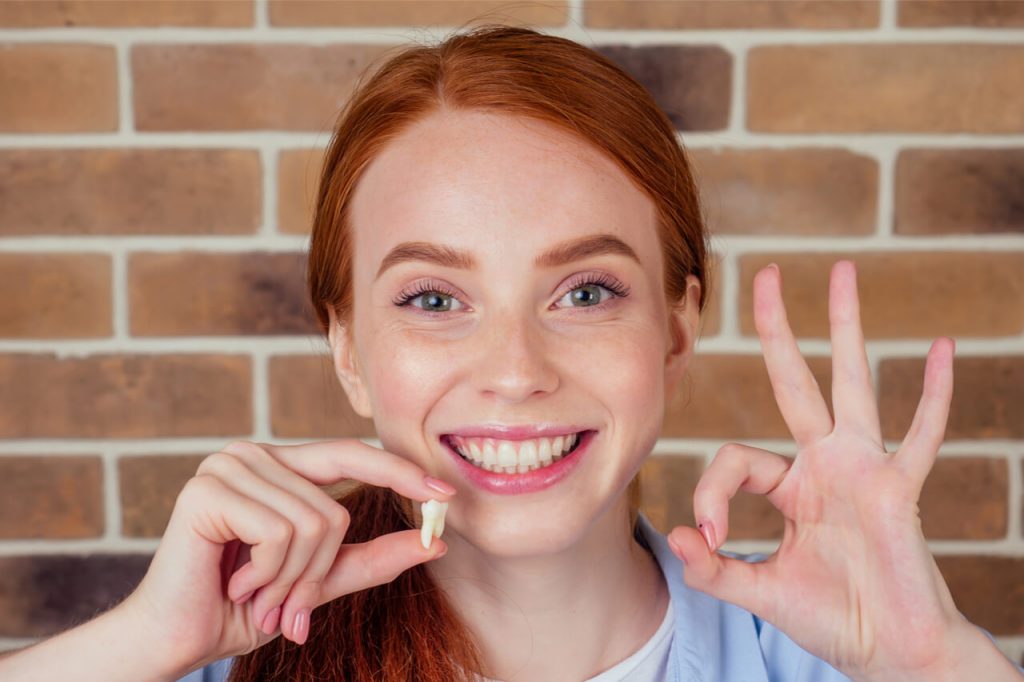Getting your wisdom teeth removed is something that most adults go through in their lives. Despite how many millions of people go to get their wisdom teeth extracted every year, it’s roughly estimated that about 12% of those teeth are truly impacted and require extraction, with an extra 10% of people developing an infection when the wisdom teeth come in. Many people find it far more convenient to get rid of the teeth before they can grow in wrong, but it is important to keep in mind that wisdom tooth removal is a form of dental surgery, and as with any other type of surgery, there is aftercare required.
The surgery itself involves making an incision in the gums to remove an impacted tooth, or one that is blocked. Opening up the gums allows for the surgeon to get all of the root out as well so that there is no trace of the wisdom tooth left behind. A wisdom tooth removal is considered a minimally invasive surgery. Common side effects of this kind of surgery, done by an experienced dentist in Blackburn, can include some nausea from the anaesthesia, pain and swelling around the gums, and some degree of bleeding before the first day has passed.
There are several tips that you can follow to try and hasten the healing process and get through it without as much pain, though as with any surgery, you should expect some discomfort.
Pain Management
To remove the tooth, whether it is impacted, infected, or if there is a cyst, your dentist is going to have to cut into your gums. The gums are a sensitive part of the body and it can hurt considerably once the local anaesthesia has worn off. There are a few different ways that you can manage this pain though.
-
Bite on a gauze pad
First things first, your dentist will likely ask you to bite down (Gently!) on a gauze pad shortly after the surgery has been completed to apply pressure and to encourage clot formation to stop the bleeding. Be mindful to bite gently so you don’t reopen the incision, and expect to keep the gauze pad there for a solid five minutes.
-
Use ice to alleviate the pain
Ice works as a mild numbing agent and is suitable for taking some of the edge off the pain that comes with a wisdom tooth surgery. It is one of the most common ways of alleviating the pain associated with this kind of surgery. Depending on your dentist’s instructions, you will probably be icing your jaw and your cheek. Ice also works as an anti-swelling agent, which will help manage some of the pain. When applying the ice pack, apply it to the side of your face where you had the extraction on for no more than 20 minutes at a time. Wait another 20 minutes after that so you can let your face rest before starting again. You should do this as often as you can stand for the first two days after the procedure.
-
Listen to your dentist
Finally, you will want to follow any and all advice from your dentist about pain medicine. Everyone is different and various procedures will warrant different amounts of pain medication. Some people are fine with over the counter pain medicines, and other dentists may write a prescription for a stronger painkiller. Always strictly follow any instructions your dentist gives you about your medication following the procedure. In some cases, you may have to take antibiotics after the procedure to prevent infections. Follow the full course of treatment, even if you are feeling better.
Create an Environment That Encourages Healing
The best way for a wound or an incision to heal is to move it and interact with it as little as possible. Unfortunately, the mouth is a very active part of the body, moving in basic eating and communication, and you may feel tempted to poke at the incision site with your tongue. Do not do this. You need to create an environment in your mouth that encourages quick healing so that you don’t run the risk of infection as much.
-
Keep your mouth clean
A key point of this is going to be to make sure that your mouth stays as clean as you can help it. The human mouth is naturally teeming with bacteria, so it is even more important to try and keep it clean. Your dentist will instruct you on if and when you can brush your teeth following the procedure. Aside from that, you need to rinse your mouth frequently. Mouthwashes are too harsh for the incision site, so you will need to use warm water with salt instead. You need to do this at least five times a day, and especially after each meal you eat.
-
Stick to softer foods
You will need to stick to softer foods during this time. Make sure to eat nutritious foods when you can, as this will give your body the resources it needs to heal, but try to keep the food as soft as possible, as movement does not assist with the healing process. Blended soups, broths, and mashed vegetables are the best way to go. Your goal during aftercare and recovery should be to rest whenever you can so that your body has the energy to heal.
Even if it is only located in the back of your mouth, a wisdom tooth removal is surgery and the recovery process needs to be treated as such. Listen to what your dentist tells you about brushing your teeth and taking medication, ice your mouth to reduce swelling and bruising, and rest your mouth whenever you can by eating softer foods so the incision site isn’t moved around as much. Bear these tips in mind to have a smooth recovery process after your wisdom tooth removal!
